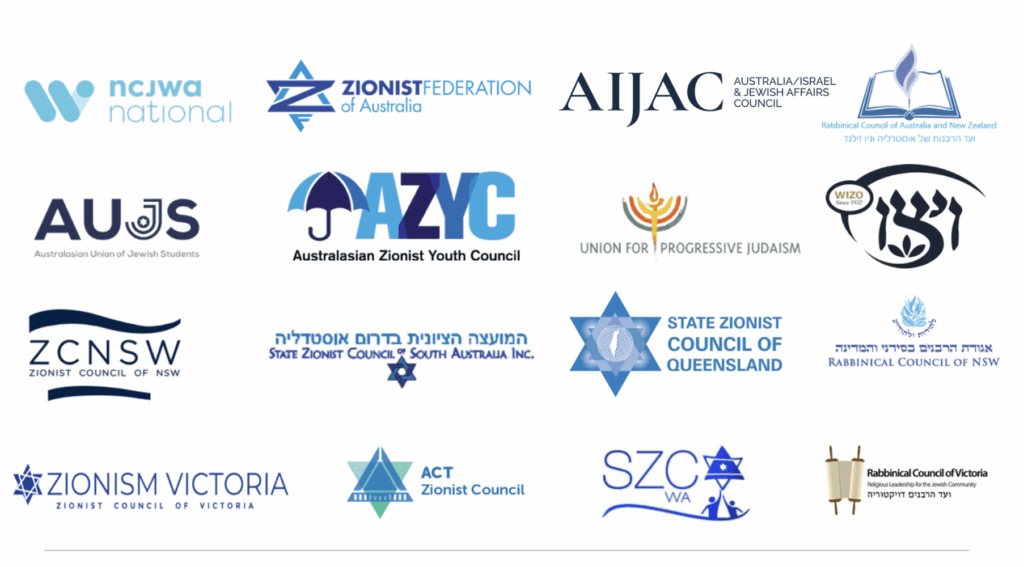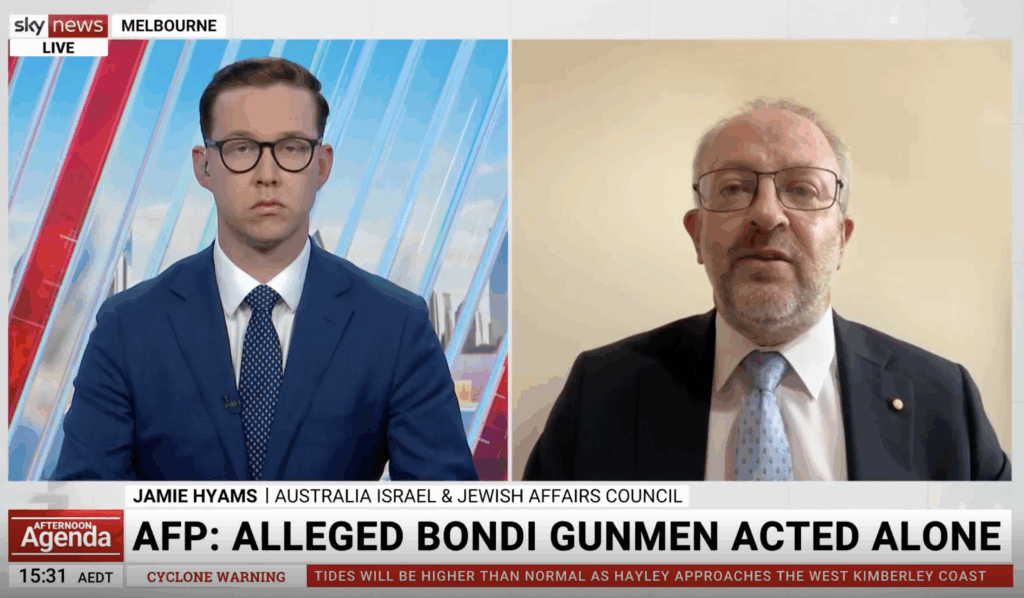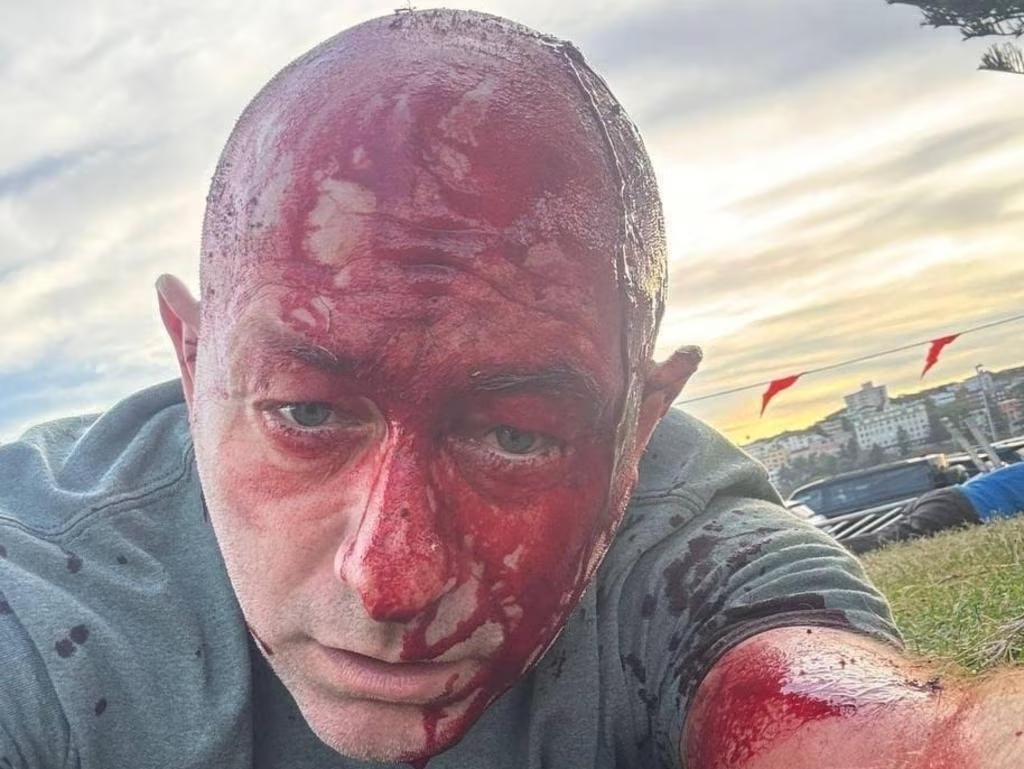UPDATES
UN Gaza incident report lacks transparency, clarity
May 11, 2015 | Ahron Shapiro

On April 27, the United Nations released a summary of a report by a Board of Inquiry (BOI) into ten different incidents that occurred at UN facilities in the Gaza Strip during the 50-day Gaza War last year. There has been a lot of superficial media coverage surrounding this report.
In this blog post, AIJAC looks deeper into the report, which for the first time officially confirms that Palestinian militants have been using UN schools for weapons storage, as command and control centres and even as rocket launch pads. On the other hand, other parts of the report dealing with damage, injuries and deaths incurred at UN shelters blame Israel for all incidents without backing such accusations up with publicly verifiable evidence or fully taking into account extenuating circumstances.
The revelations about the use of UN facilities as havens by Palestinian militants was discussed by the NGO UN Watch, Jonathan Tobin at Commentary Magazine, and Shlomi Eldar at Al Monitor, among others.
The point made repeatedly in these articles is that this report confirms, unequivocally, that Palestinian militant groups were both firing from some UN facilities and using them for munitions storage. This essentially vindicated Israel’s claims that Hamas was using civilian infrastructure for warfare and using Gazans as human shields, which greatly influenced the civilian death toll in the war.
The role of UNRWA
Clearly, while the BOI’s summary diplomatically downplays the complicity of UNRWA workers in the incidents, careful attention to the recommendations of the report show that the UN is indeed aware there is a problem with “neutrality” at UNRWA that needs to be addressed. See section 98, subsection “b”:
The Office of the Commissioner-General of UNRWA should consolidate existing practices on neutrality into a framework document to ensure a consistent and coherent approach, agency-wide. This framework document should take into consideration: staff neutrality, premises/installations and assets, such as vehicles, and operations. It should also outline the roles and responsibilities for various aspects of neutrality, including approval, review and maintenance of relevant documentation. The mechanism for monitoring and handling of neutrality-related incidents should also be described.
Since UNRWA was relied upon to provide a great deal of the testimony and physical evidence used for the report, that fact should also cast some doubt into some of the claims the report makes against Israel.
Nevertheless, Pnina Sharvit Baruch and Keren Aviram at the Tel Aviv-based Institute for National Security Studies note that, from Israel’s perspective, the latest report compares favourably in content and tone to the report that emerged from a Board of Inquiry launched under very similar circumstances in 2009, following the Israel-Hamas war that took place at that time, Operation Cast Lead.
The stated objective of both Boards was identical: to make findings of the facts and circumstances related to the incidents in order to prevent the repetition of similar events and better protect UN facilities and personnel working in the area. It seems that despite the similarity in the guiding rationale and institutional mechanism of both Boards and their general framework, there was a striking difference in how each Board interpreted and applied its mandate. This difference is evident in the description of the reality on the ground during the fighting, in the attitude to Israel’s position on the events, in their sweeping conclusions, both factual and legal, and in their recommendations.
There is no doubt that from Israel’s perspective, the current report represents a positive development.
A summary, not a report
There has been a misperception that what was released to the media and the public was the report itself. In fact, it was not. It was only a 22-page summary of the 207-page report. For that reason, we are never given an opportunity to see how the BOI came up with its conclusions about each incident, which always ruled against the IDF, even when the IDF seemingly had a very good reason to believe it was not responsible for the incident in question.
Secretary General Ban Ki-moon’s introductory letter is revealing in this respect. He wrote:
I wish to emphasize that this is a summary of the Board’s report and not the report itself. Notwithstanding some difficulties in obtaining evidence, that report runs to some 207 pages and is accompanied with footnotes detailing relevant sources and citations, and some 160 appendices and annexes of relevant evidence, including witness statements, investigative reports including on weaponry, medical reports, photographs, video footage, audio recordings, submissions of non-governmental organizations, meeting notes and other materials.
If the evidence against the IDF was so convincing, one must ask why the UN refuses to release its full and unedited report. Nevertheless, we must deal with what was made to the public.
The BOI’s mission was twofold.
Primarily, the Board was sent to review and investigate a number of fatal and non-fatal war-related incidents that occurred at UN schools and shelters – specifically three incidents that led to deaths and injuries, three other incidents that led to injuries and one incident that led to damage but no injuries.
These are listed in Section 1 of the summary as incidents “a” through “g” . Of paramount interest to the UN was determining in each case what party – Israeli or Palestinian – shot the ordinance that caused the damage.
This secondary purpose was to probe three incidents where Palestinian militants had stored weapons in UN school buildings and/or used these schools as temporary command and control centres. These are listed in Section 1 of the summary as incidents “h” through “j” (incident “g” has a lot in common with these as well, though the UN doesn’t place it in this category).
This latter part of the investigation was very straightforward and for the most part very reliable since UN officials themselves were involved in the initial discoveries during the war. The UN admits that Palestinian militants used several schools for weapons storage and command and control centres. For the BOI, the probe into these well-reported incidents simply deals with determining how UN schools were exploited and compromised by militants in this way and suggesting ways this might be prevented in the future.
The incidents
(a) Injuries occurring at and damage done to the UNRWA Maghazi Preparatory Girls “A/B” School on 21 and 22 July 2014 (Two injured)
AIJAC summary: Some agreement, some disagreement between BOI and IDF. The school, which had originally been designated an emergency shelter, was removed by the UN from the list of authorized UN shelters in Gaza and largely evacuated as heavy fighting between the IDF and Hamas approached the area. The IDF told the BOI that it had identified significant enemy presence in the area around, and apparently also within, the school (although this was disputed by UNRWA). The IDF said combat was taking place a kilometre away from the school and as such appears to concede the possibility of a stray tank shell striking the school but does not agree the evidence shows a mortar strike at the same school was of Israeli origin, while the UN Board of Inquiry simply blames Israel for both the tank shell and the mortar, without explanation or qualification.
(b) Injury occurring at and damage done to UNRWA Deir El Balah Preparatory Girls “C” School on 23 July 2014 (Three lightly injured)
AIJAC summary: Mild disagreement. The IDF is still investigating though has not been able to identify any IDF operations that could be connected to the incident, while the UN thinks it was caused by a tank shell (stray?).
(c) Deaths and injuries occurring at and damage done to the UNRWA Beit Hanoun Elementary Co-educational “A” and “D” School on 24 July 2014 (12-14 dead, 93 injured)
AIJAC summary: The Israeli government told the BOI that the Coordination and Liaison Administration to the Gaza Strip had made extensive attempts via UNRWA and the Red Cross to evacuate the school in order to minimize the risk of incidental harm to civilians as a result of the intensive fighting in the area. It also stated that the school had not been the object of the attack. Nevertheless, the IDF and UN agree IDF was at fault. The IDF’s Military Advocate General (MAG) has ordered a criminal investigation into the incident.
(d) Injuries occurring at and damage done to Zaitoun Preparatory Girls “B” School on the night of 28/29 July 2014 (7 injured)
AIJAC summary: IDF and UN Board of Inquiry disagree entirely. IDF suspects the damage was caused by Palestinian ordinance, and insists there was no air strike at that location. The UN Board of Inquiry blames an Israeli air strike without providing any evidence to the public about how it came to that conclusion.
(e) Deaths and injuries occurring at and damage done to the UNRWA Jabalia Elementary Girls “A” and “B” School on 30 July 2014 (17-18 dead, 99 injured)
AIJAC summary: According to the BOI, fighting, including the launching of rockets, had been taking place near the school for some time and Israel had previously leafleted the area urging civilians to take refuge in Gaza City. Israel said its artillery had been ordered to strike military targets nearby and had not intended to strike the school. Nevertheless, IDF and UN agree the IDF was at fault. The IDF’s MAG has ordered a criminal investigation into the incident.
(f) Deaths and injuries occurring at and/or in the immediate vicinity of, and damage done to, the UNRWA Rafah Preparatory Boys “A” School on 3 August 2014 (15 dead, 25-30 injured)
AIJAC summary: The IDF and the UN Board of Inquiry agree that the incident occurred when Palestinian militants trying to flee on a motorcycle were hit in a guided missile strike on a road that passed in front of a UN school. By the time it became clear that the motorcycle’s path would place the point of impact near civilians, the missile could not be diverted. The IDF is continuing to investigate this incident, but apparently has not yet concluded whether a criminal investigation is warranted.
(g) Damage done to the UNRWA Khuza’a Elementary College Co-educational “A” and “B” School between 17 July and 26 August 2014
AIJAC summary: The IDF entered and damaged a vacant UN school in the course of a battle that stretched over several days. The IDF said that the school had been used as a command and control centre for Palestinian militants, something that the BOI’s investigation does not dispute.
(h) Presence of weaponry at the UNRWA Gaza Beach Elementary Co-educational “B” School on 16 July 2014
AIJAC summary: Palestinian weapons were discovered in a vacant UN school guarded by UNRWA personnel. By the time the UN was ready to remove them, they discovered the weapons had already been removed by militants.
(i) Presence of weaponry at the UNRWA Jabalia Elementary “C” and Ayyobiya Boys School on 22 July 2014
AIJAC summary: Palestinian weapons were discovered in a vacant UN school guarded by UNRWA personnel. By the time the UN was ready to remove them, they discovered the weapons had already been removed by militants. The UN BOI also concluded based on credible video evidence provided by Israel that Palestinian militants had used the school grounds for rocket launchings against Israel.
(j) Presence of weaponry at the UNRWA Nuseirat Preparatory Co-educational “B” School on 29 July 2014 and on 17 August 2014.
AIJAC summary: Palestinian weapons were discovered in a vacant UN school guarded by UNRWA personnel. By the time the UN was ready to remove them, they discovered the weapons had already been removed by militants.
Flaws in the BOI’s report
While it has been noted that this report represents a distinct improvement over the UN’s past investigations into Gaza conflicts, there are still reasons for this report to be approached sceptically. Among these are:
• Lack of any real Palestinian self-critical military investigation
While the IDF was very cooperative with the UN’s investigation, there is no sign whatsoever that any actual combatants on the Palestinian side took part in the investigation in any transparent way.
As Ban Ki-moon wrote in his introductory letter to the summary:
I appreciate the reception of the Board by representatives of the State of Palestine and meetings with the local authorities in Gaza…
I welcome the efforts of the Government of Israel in establishing criminal investigations into certain incidents which occurred during the conflict, including some of those falling within the scope of the Board’s terms of reference. I hope that the Government of Palestine will also conduct examinations into possible criminal activity during the conflict. Swift investigations must be undertaken, in accordance with international standards.
Of course, it goes without saying that there has been no “investigation” on the Palestinian side, nor is one expected. As for the reference to “Government of Palestine”, Ki-moon is fully aware that there is no such unitary body – the Palestinian Authority has no jurisdiction in Gaza, and Hamas – the “local authorities in Gaza”, is not recognised by the UN as the legitimate Palestinian government.
The IDF continues to transparently investigate Israeli conduct in the Gaza War. (The IDF’s Military Advocate General (MAG) maintains a website for following the progress of such investigations here.)
• Passage of time and lack of human resources to conduct proper investigation
The BOI was assembled on 10 November – about two and a half months after the end of the conflict, and evidently only actually arrived in Gaza on 26 November, staying to 13 December.
Only two members of the BOI had military experience, (noted peacekeeper retired Dutch Maj. General Patrick Cammaert led the team) but only one with any obvious expertise in identifying exploded ordnance (Mr. Pierre Lemelin, a former Chief Ammunition Technical Officer in the Canadian Forces).
The other three members were Maria Vicien-Milburn, a former General Counsel of the United Nations Educational, Scientific and Cultural organization (UNESCO); Lee O’Brien, a former Senior Political Officer in the Department of Political Affairs, who at any rate withdrew from the investigation at the end of December for medical reasons; and Kovvurichina Reddy, a former Chief of Security for a number of United Nations field presences. None of these three members of the BOI would have had anything useful to add to the military aspects of the investigation.
Furthermore, the passage of time between the time the incidents occurred and the time the BOI visited the region ensured that whatever physical evidence they were shown could not be guaranteed to be authentic.
• The BOI rejected the IDF’s arguments in their own defence without offering a reason why
For example, regarding mortar fire that struck the UNRWA Maghazi Preparatory Girls “A/B” School on 22 July 2014, (incident “a”) the report had this to say:
The Government of Israel informed the Board that, as a result of the examination that had been initiated at the request of the MAG, it had been found that, on 22 July, the IDF was engaged in mortar fire in the area of Maghazi, but that all fire was directed at open areas at least two kilometres away. [Emphasis added] Moreover, IDF munitions experts who had examined photographs of a fragment of a mortar round that had been collected by UNRWA at the scene of the incident had been unable to determine whether it was a remnant of an IDF 81 MM mortar round, as opposed, for example, to an 82 MM round, which, it was said, were in use by Hamas. Such determination would require physical examination of the remnant. The Board, however, found that the school had been hit by 81 MM mortar rounds fired by the IDF. [Emphasis added]
The UN’s seemingly cavalier dismissal of the IDF’s defence is remarkable. How so?
Here is an image of an IDF soldier holding an 81MM mortar shell,
and here is an image of an Hamas militant holding an 82MM mortar shell.
As you can observe, the shells appear almost identical in every way. Now, imagine trying to tell the difference between them merely from a photograph of the fragments they make after they explode. The IDF’s reasoning is very plausible. Now, what was the evidence that caused the “Board” to reject the IDF’s defence? Was it the mortar fragments themselves? We don’t know, but even if they were – how would the Board know that the fragments being given to them months later were the ones collected at the site of the blast? Of course, they can’t.
This is not the sort of evidence that would ever stand up in a court of law.
Moreover, the IDF’s comment that any light mortar shelling was two kilometres away is enormously significant. Mortar shells lob into a target. If they miss, they don’t miss by that much. It’s not like a tank shell, for instance, which travels at high velocity and in a straight line. A stray tank shell could easily explode miles from its intended target under the right circumstances.
Which brings us to a different incident at the same school mentioned in the UN summary (again, incident “a”).
The UN summary said:
The Government further informed the Board that the incident was under examination at the request of the Military Advocate General (MAG), that IDF infantry and armoured units had been engaged in military activity approximately one kilometre south of the school at the time of the incident and that it was suspected that the school had been hit by 120 MM tank ammunition.
It’s important to realise that the shells have an effective range of four kilometres.
This means that even if the school was hit by a shell, the IDF’s assertion that combat was taking place a kilometre away from the school would tend to point to an inadvertent strike – an accident. This scenario should have been spelled out in the summary. It was not.
The possibility of a stray tank shell arises again in incident “b”, where a projectile passed through a building and out the other side without exploding. The UN Board of Inquiry decided it was a 120MM HEAT projectile, which again, is fired from a tank.
The summary said it “had not been possible to identify any IDF operations that could be connected to the incident”. It is almost certain that the reason for this is that any tank activity involved was a great distance away from the school and that the school itself was not “targeted”.
At times, the BOI – for all intents and purposes – accuses the IDF of lying.
For example, incident “d” blames a blast that penetrated the ceiling of a school on a Israeli “Spike” missile, despite its concession that (Palestinian) militant activity was “noted” in the area. Meanwhile, according to Israel, “It had not been possible to identify any IDF operational activity on the date in question that could be connected to the incident, including any aerial strike on the school or in its vicinity.”
It is unethical for the BOI to blame the attack on Israel without providing more direct evidence to refute all other scenarios, including and especially Palestinian ordnance.
Conclusion
As mentioned before, the Board of Inquiry’s latest report represents a major improvement in fairness and objectivity over a 2009 report borne under similar circumstances, mainly because it included in its summary the Israeli version of events for every incident, as well as documenting for the first time the inexcusable exploitation of UN facilities by Palestinian militants.
Nevertheless, the report remains fundamentally flawed in certain aspects.
The fact that the military commanders on the Palestinian side did not contribute to the investigation means that the BOI did not base their conclusions on all the facts – just the facts that they were given access to.
For that reason, alone, there should have been more equivocation about the validity of some of their conclusions, particularly in the cases where the IDF was certain that no military operations were going on in the area where the incidents occurred at the time.
The UN BOI also ignored the possibility that the Palestinian “witness” testimony that formed the basis of so much of their investigation may have been influenced by the fact that Gaza is ruled by a totalitarian regime with a history of taking violent retribution against those who dare to speak out against them.
Finally, the BOI’s summary also ignored the inevitable role that accidents play in war – no matter where the war is fought.
This is an important point. When Secretary General Ban Ki-moon wrote, “I will work with all concerned and spare no effort to ensure that such incidents will never be repeated,” he is not being completely honest about the nature of warfare.
This is because he makes it seem as though just because the IDF may have been responsible for some of the incidents that occurred at UN shelters (the UN now insists it’s all of them, though it refuses to release the evidence that it says it used to reach that conclusion), they were all in some way preventable. That’s simply not true.
Accidents can and will happen in urban warfare, despite every precaution. Such accidents are an unfortunate part of war and are not war crimes. Unfortunately, there is nothing that neither Ban Ki-moon, nor the IDF, nor anyone else can possibly do to prevent them entirely.
Ahron Shapiro
Tags: Israel





